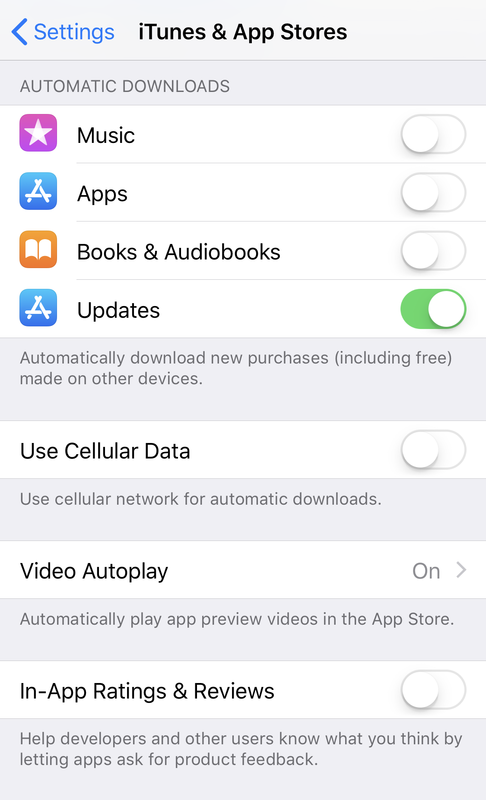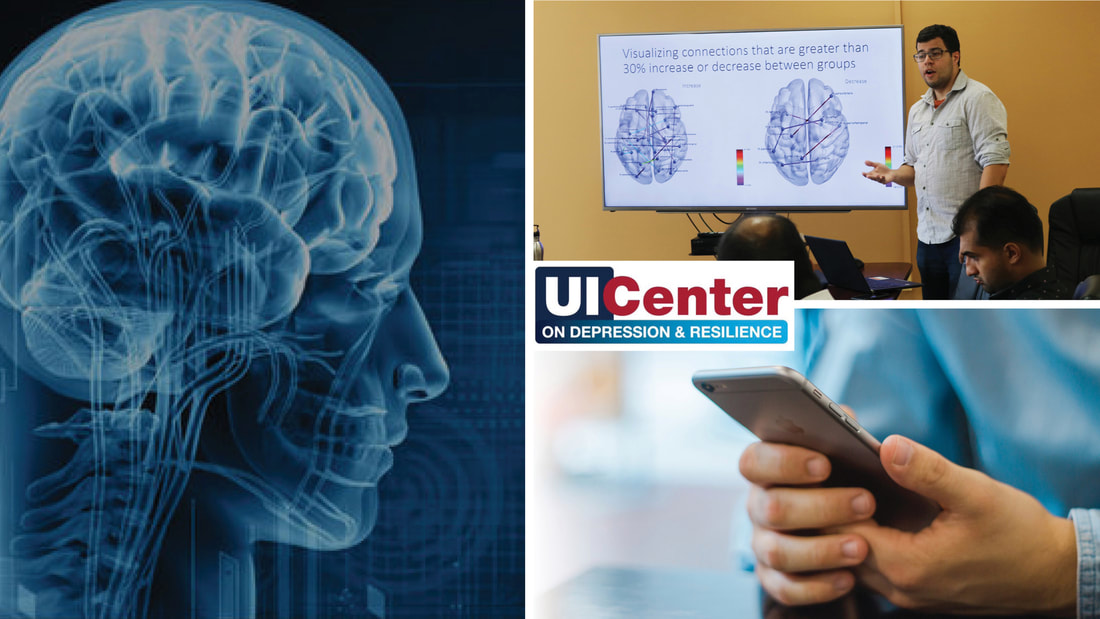BiAffect
Menu
News and updates
|
Read the full story by The Guardian reporter Zoë Corbyn here
The BiAffect study, a research effort focused on keystroke behaviour to predict bipolar episodes run by researchers at the University of Illinois at Chicago, has an open science component that allows the public to download an app and take part so that differences between healthy adults and those with bipolar disorder can be better understood. It has about 2,000 participants. Follow this link to read the rest of this article
0 Comments
A review on the feasibility and validity of building the digital behaviorome via sensor data for neuropsychiatric research published in the journal Current Opinion in Systems Biology.
This review article summarizes how emerging connected technologies (e.g., smartphones and wearables) may provide novel avenues to understand an individual's behavior through the lens of systems biology. First, we surveyed recent research efforts that leveraged the multimodal high temporal resolution data derived from connected devices to build digital phenotypes and/or discover digital biomarkers of the behaviorome. We write this review with a particular emphasis on the detection, diagnosis, and symptom monitoring of neuropsychiatric disorders, as these pathologies may manifest primarily as disruptions to the behaviorome. We then discussed new opportunities and challenges these state-of-art research efforts bring as they intersect with other areas of natural and social sciences. Ultimately, we suggest how incorporating systems biology and connected technologies data can lead to a better understanding of complex neuropsychiatric disorders. Read the full story by science writer Teresa Carey in Freethink
For starters, I forgot the alphabet. It was one of those weeks where I missed every deadline already — unable to focus on work or anything else. I was instructed to quickly touch alternating letters and numbers in order: 1A, 2B, 3C, 4D, 5E, 6... What is the next letter? The stopwatch ticked on, and I imagined my multitasking score dropping. (Oh well, multitasking isn't a thing anyway, right?) I'm a volunteer for a study that uses the BiAffect app to screen my virtual mental health. Created by a University of Illinois team, BiAffect is a phone app that monitors mood and how it impacts cognition. The study is built around the theory that personal devices, like fitness trackers, phones or smartwatches, act as a digital proxy for human behavior. This emerging scientific field is called digital phenotyping... Follow this link to read the rest of this article Published in the Journal of the American Medical Informatics Association, this paper seeks to capture the effects of mood, demographics, and time-of- day on keyboard metadata.
Objective Ubiquitous technologies can be leveraged to construct ecologically relevant metrics that complement traditional psychological assessments. This study aims to determine the feasibility of smartphone-derived real-world keyboard metadata to serve as digital biomarkers of mood. Materials and Methods BiAffect, a real-world observation study based on a freely available iPhone app, allowed the unobtrusive collection of typing metadata through a custom virtual keyboard that replaces the default keyboard. User demographics and self-reports for depression severity (Patient Health Questionnaire-8) were also collected. Using >14 million keypresses from 250 users who reported demographic information and a subset of 147 users who additionally completed at least 1 Patient Health Questionnaire, we employed hierarchical growth curve mixed-effects models to capture the effects of mood, demographics, and time of day on keyboard metadata. Results We analyzed 86 541 typing sessions associated with a total of 543 Patient Health Questionnaires. Results showed that more severe depression relates to more variable typing speed (P < .001), shorter session duration (P < .001), and lower accuracy (P < .05). Additionally, typing speed and variability exhibit a diurnal pattern, being fastest and least variable at midday. Older users exhibit slower and more variable typing, as well as more pronounced slowing in the evening. The effects of aging and time of day did not impact the relationship of mood to typing variables and were recapitulated in the 250-user group. Conclusions Keystroke dynamics, unobtrusively collected in the real world, are significantly associated with mood despite diurnal patterns and effects of age, and thus could serve as a foundation for constructing digital biomarkers.
The BiAffect team explores ethical, legal and regulatory issues inherent in the development and deployment of real-time monitoring systems for the diagnosis and management of psychiatric disorders in this article published in Focus: The Journal of Lifelong Learning in Psychiatry.
Abstract: Current management of psychiatric disorders relies heavily on retrospective, subjective reports provided by patients and their families. Consequently, psychiatric services are often provisioned inefficiently and with suboptimal outcomes. Recent advances in computing and sensor technologies have enabled the development of real-time monitoring systems for the diagnosis and management of psychiatric disorders. The state of these technologies is rapidly evolving, with passive monitoring and predictive modeling as two areas that have great potential to affect psychiatric care. Although outpatient psychiatry probably stands to benefit the most from the use of real-time monitoring technologies, there are also several ways in which inpatient psychiatry may also benefit. As the capabilities of these technologies increase and their use becomes more common, many ethical and legal issues will need to be considered. The role of governmental regulatory bodies and nongovernmental organizations in providing oversight of the implementation of these technologies is an active area of discussion. UIC Center on Depression and Resilience projects BiAffect and DiaBetty covered by Block Club Chicago9/24/2019 The technologies developed by the UIC Center on Depression and Resilience would allow patients to use their smartphones to track their neurological patterns.
Follow this link to read the rest of this article In a January 3 story about using smartphones to detect depression, Lindsey Tanner, a multimedia journalist covering national medical news for the Associated Press, interviewed Dr. Alex Leow, an app developer and associate professor of psychiatry and bioengineering at the University of Illinois’ Chicago campus about BiAffect and it’s place in the broader digital health ecosystem for a piece that illuminates the role of crowdsourcing, machine learning, and the role smartphones have to play as part of a broader story exploring several approaches to turning problematic device usage on its head and using digital phenotyping to tame technology.
hone Psychiatry story. Follow this link to read the corrected version of this article Read the full story by WSJ reporter Laine Higgins here
The latest wearable technology can reliably track heart beats and notify users of any irregularities. Up next? Reliably tracking your brain and mental health. A team of researchers at the Center on Depression and Resilience at the University of Illinois at Chicago is working on technology that could monitor users’ mood and cognition—important indicators of mental-health stress—by tracking their typing patterns with an iPhone app called BiAffect. Initial research has found it is possible to predict episodes of mania and depression among users with bipolar and major depressive disorder based on changes in their typing habits. For instance, a manic episode may be preceded by rising numbers of typos, faster typing, more frequent use of the “delete” key or tremors detected by the phone’s accelerometer, which measures the device’s tilting and orientation. During depressive episodes, users withdraw from their personal technology and tend to send short, infrequent messages. “It doesn’t track what you type, but how you type it,” says Dr. Alex Leow, an associate professor from the university’s College of Medicine and lead researcher on the project. Follow this link to read the rest of this article |
|

